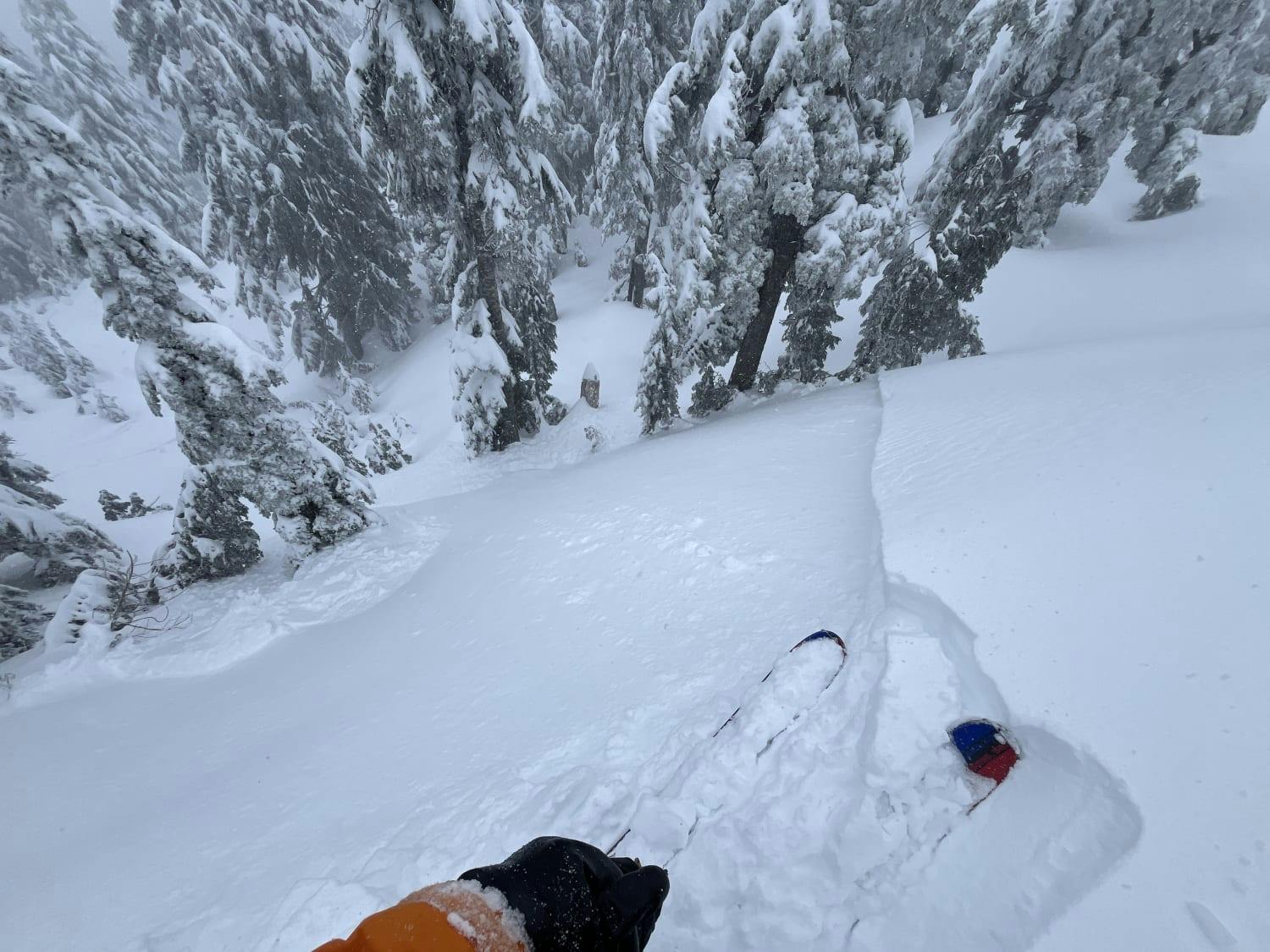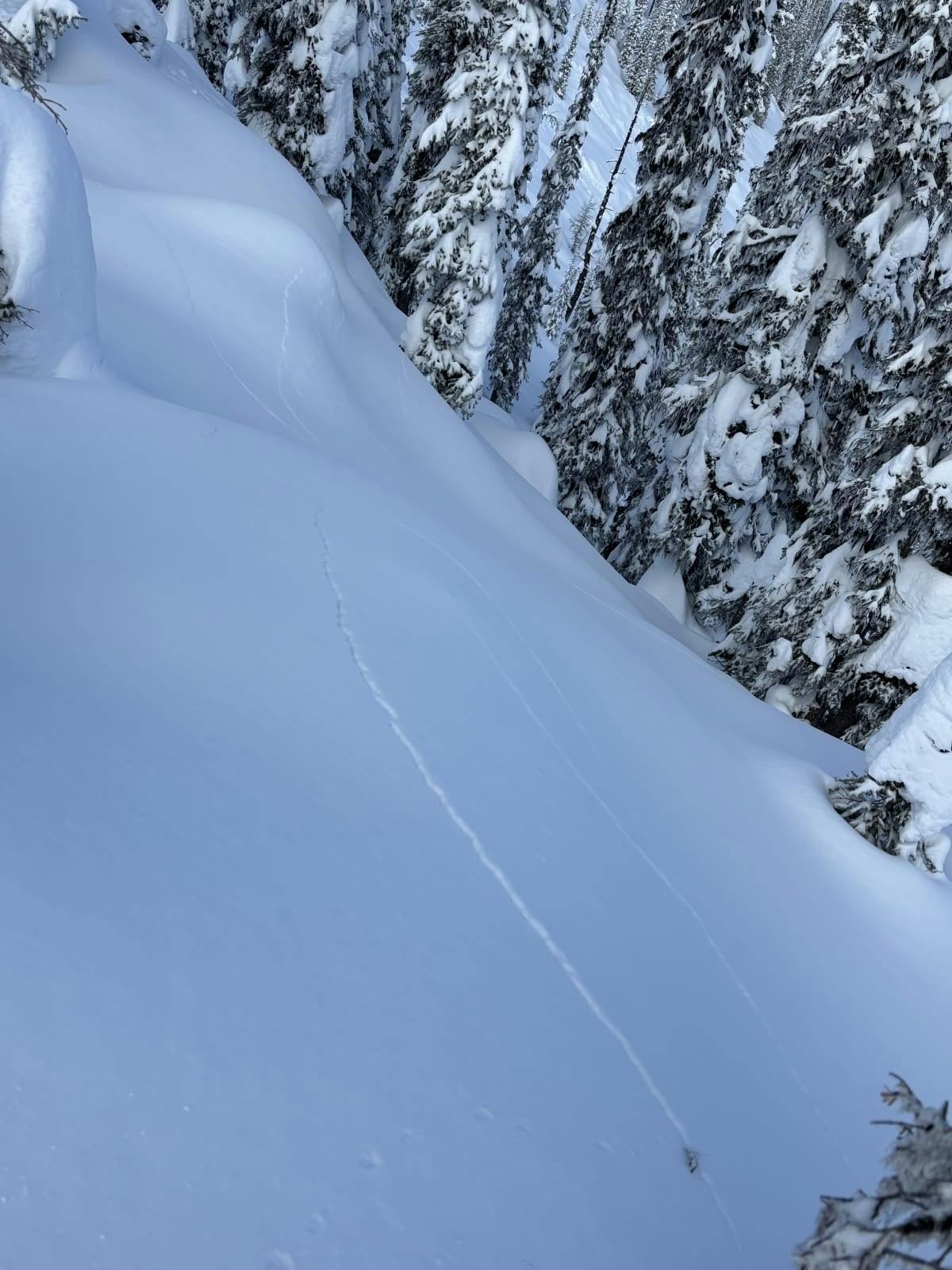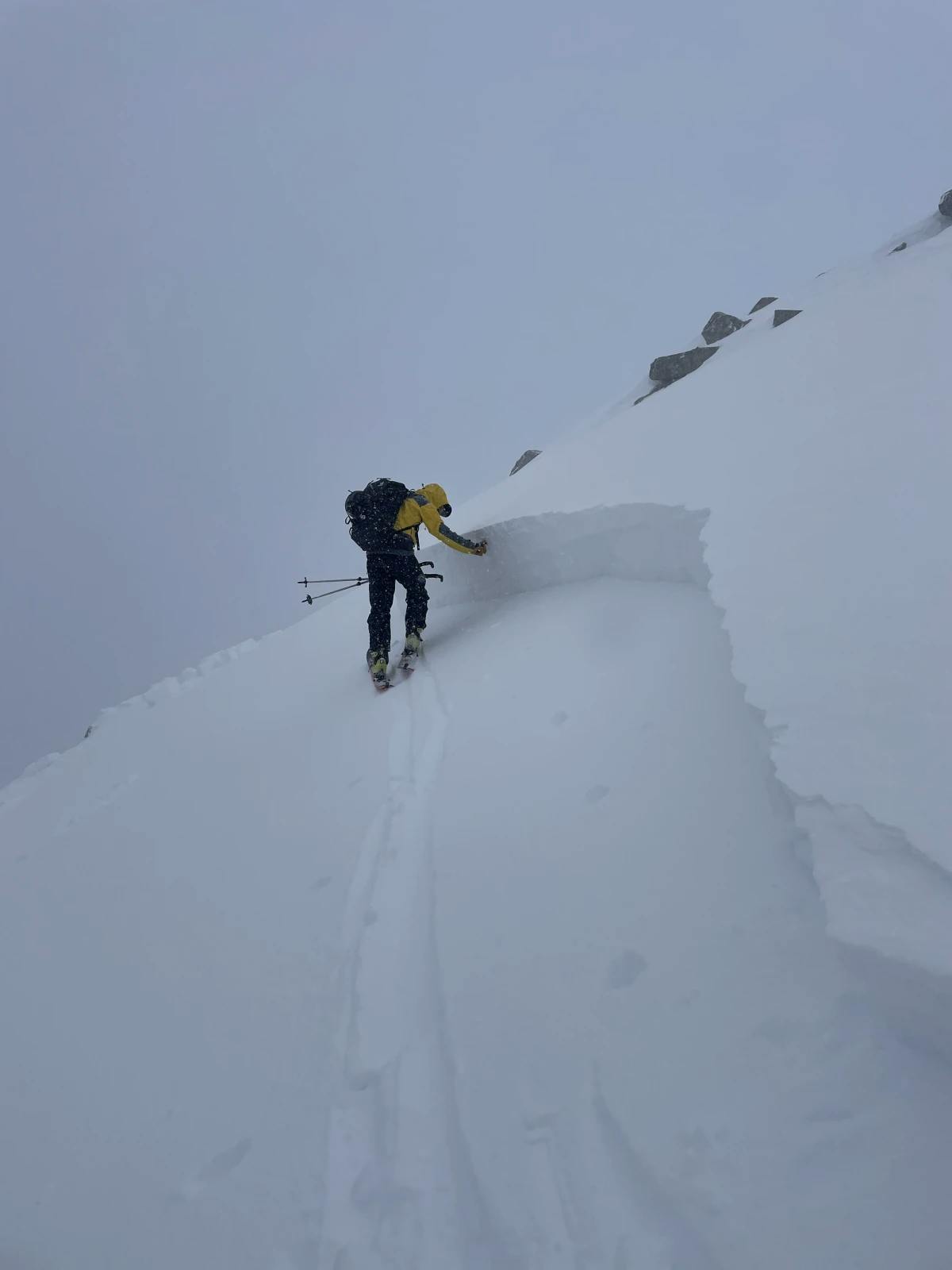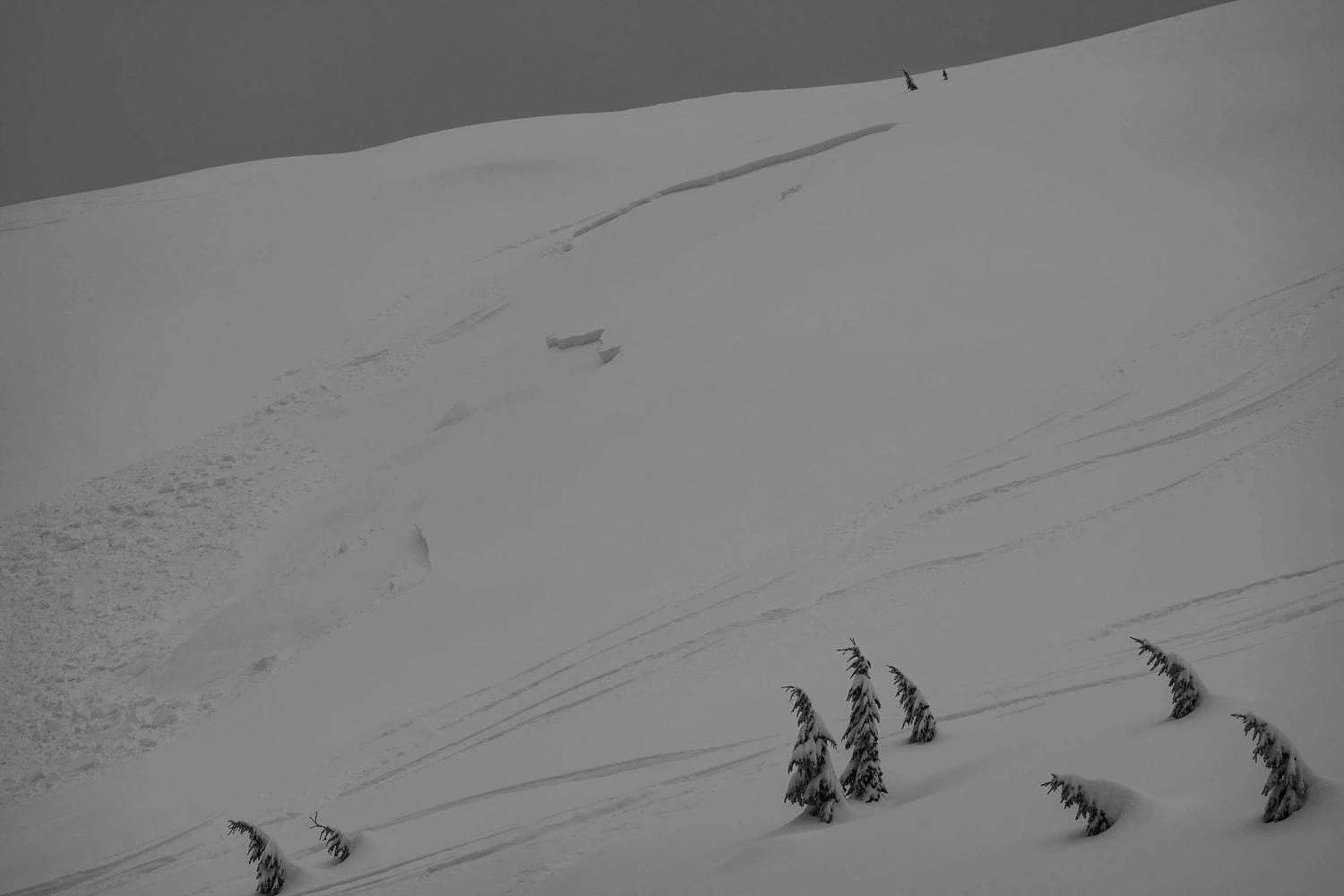- Date
- lundi 3 février 2025
When the snowpack is giving you free advice, take it

A crust buried mid-storm produced reactive conditions on Feb. 2 in Vancouver's North Shore mountains. MIN report from brento.
Last week we published a forecaster blog about shifting our mindset and stepping back as stormy conditions brought a sharp rise in avalanche danger. Widespread weak layers of surface hoar, facets, and hard crusts are now buried around 30 to 60 cm deep in the interior and up to 80 cm deep on the coast.
As we return to cold and dry conditions, avalanche danger will likely remain elevated due to these buried layers. Maintaining a conservative mindset is key as these challenging conditions continue.
The Mountain Information Network (MIN) lit up over the weekend as people headed into the backcountry–thanks to everyone who posted! These observations help our forecasters and other recreationists. Most reported obvious signs of instability, even in conservative terrain. Several observers even noted slab avalanches on lower-angle slopes, around 26 degrees, which is typical of buried weak layers like surface hoar and facets.
Storm snow takes longer to stabilize and weak layers are preserved in cold temperatures, so it’s time to embrace simple or non-avalanche terrain depending on your local avalanche forecast. Stick to low-angle or densely forested areas and look for options to reduce your exposure to avalanche terrain. While natural activity will likely decrease over the coming days, human triggering of avalanches will remain a concern for some time.
Here’s a reminder of some key signs of instability to watch out for:
- Recent slab avalanche activity.
- Remotely-triggered avalanches, often triggered from flatter terrain adjacent to a slope, e.g., ridge crests, benches, or areas below steep slopes.
- Whumpfing, which is the collapse of a buried weak layer. It is often associated with a distinct “whumpf” sound.
- Shooting cracks in the snow that propagate away from you.
These all are red flags of an unstable snowpack that’s primed for triggering avalanches. Think of it as free advice from the snowpack itself—time to step back and reassess your plan.
Here are some recent MIN images to highlight some avalanches, observations, and signs of instability from around BC.

This rider-triggered slab occurred on a 26 degree slope on Feb. 2, near Terrace. MIN report from gordweary.

Extensive cracking within the storm snow near Nelson on Feb. 1. MIN report from c.dierker.

This size 2.5 slab was remotely triggered near Pemberton on Feb. 1. MIN report from willvg7.

This slab was remotely triggered by riders as they were descending near Squamish on Feb. 1. MIN report from christieimages155.

A skier remote observed near near McGregor on Feb. 2. The group also had an avalanche incident that they highlight in the MIN. MIN report from ben-hawkins.